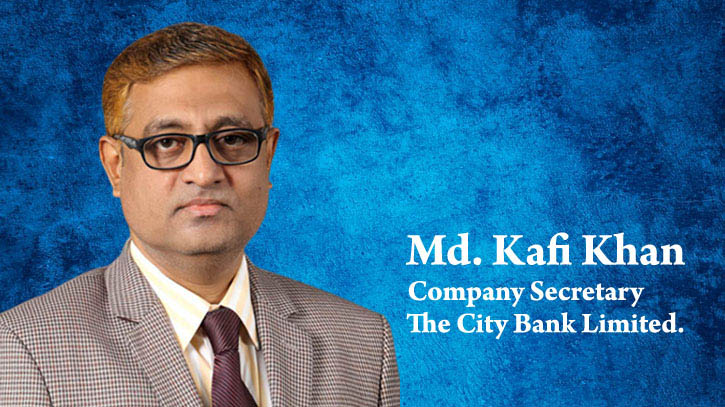
Interconnected modular digital world, acting alone is too onerous for most companies. Working collaboratively to complement, adjust and support joint efforts is essential to leveraging digital ecosystems. This shift towards platform-based ecosystems is expected to gain momentum in 2023. It is possible to start integrations and collaborations with new partners quickly and easily.
Also having the ability to create bundles of integrated services to make the most of new business opportunities, making growth and innovation possible in an efficient and sustainable way and improving the final user experience. It is looking to be an exciting year for retail banking and fintech, with a number of important trends that will shape the future of the industry.
These trends will change the way that banks operate in addition to having a significant impact on the way that customers interact with their financial services. To get ahead of the curve, the banking industry may go undergo a rapid change, and the success of banks in the future will depend on their ability to adapt and embrace these trends.
Banking-as-a-Service, continuously rising: Banking-as-a-Service (BaaS) allows for personalized solutions and services to be offered through open platforms, with payments brought to open platforms and combined with other services, from a commodity becomes a potential differentiating factor. Thus, it can expect to see an increased convergence between platform providers and specialized payment solution providers in the future to offer the best solutions and seamless customer experience for end customers.
Digital onboarding experience, accelerating: Digital onboarding is to make the process as simple as possible while ensuring that all necessary information is collected. Frictionless digital onboarding requires a user-centred design approach that puts the customer at the center of the process. This means understanding the customer's needs and providing a personalized experience that is tailored to their specific requirements which creates a seamless experience for the customer, making it more likely that they will complete the onboarding process and become a loyal customer. Most innovative technologies available on the market including biometrics, artificial intelligence and anti-fraud controls, in doing so.
Deflect bank branch and ATM closures: In 2023, it can expect to obser more banks adopting an infrastructure sharing model to address the challenges of branch and ATM closures. This trend will involve the use of white label branches, where a single location serves as a shared service centre for all banking activities, regardless of the customer's bank.
The white label branch also has the ability to offer further financial services in addition to access to cash. To work in practice, multiple banks are expected to collaborate by pooling their investments in ATMs to provide wider coverage of free ATM services in a specific area. The complexity of the ATM ecosystem is increasing as technology and parallel threats evolve.
Banks will be considering robust solutions or models like Zero Trust to deal with the vulnerability of systems with reactive update policies and third-party actors who have uncontrolled access to the devices. The Zero Trust approach, for example, provides protection for the self-service channel by shifting the paradigm from the legacy approach to offer a drastic reduction of the attack surface and full control of software and hardware changes.
Artificial Intelligence in banking, increasing need for: The use Process Automation in retail banking allows banks to automate repetitive tasks, such as data entry and account opening, which can help to reduce costs and improve efficiency. This can help banks and fintech companies to better serve their customers and stay competitive in the market.
However, implementing AI also requires a major organizational transformation and calls for the necessary changes in operations, personnel, and skills, while being mindful of risks, ethical and regulatory issues. Striking the right balance between control needs and the promotion of innovation is crucial when introducing AI.
Cash access protection: With the rise of digital payments and mobile banking, cash management systems have become increasingly important for retailers and banks. 2023 and onwards, it is expected to observe more companies adopt these systems that to AI, can predict and make it possible to preserve and guarantee the possibility for consumers to better manage their cash flow and reduce the risk of fraud, all the while making the availability of cash and related services less expensive for the bank. This can help to improve the efficiency of retail banking and make it easier for customers to access cash.
Final thoughts and remarks: Banking is radically transforming. Many banks may thrive by fundamentally changing the way that financial services are embedded into daily life. The banking sector is at a turning point. Key measures for banks are at a historical low point. The sector’s price-to-book value has fallen to less than the value of other industries. That gap is less the result of current profitability and more about uncertain profit growth in the future. While banks have pushed for great improvements recently, margins may shrink down more in the following periods.
Regulation and increasing intersectional competition are still worries, but the bigger threat is a global trend: new challenges often from different industries and often benefiting from the kind of cross-industry platforms behind the recent success of companies. It should believe that the cynics are right about today and wrong about tomorrow. Banking is facing a future marked by fundamental restructuring. But we also believe that banks that successfully manage this transition will become bigger and more profitable and grow faster while leading to a value creation opportunity.
In the next era, banks can realign to compete in new arenas, organized around distinct customer needs. These arenas will expand far beyond the current definition of financial services, and they will also be hotly contested by a wide range of tech giants, tech start-ups, and others. But this daunting reorganization, or breakup, could also provide banks with a huge opportunity: higher margins, new revenue streams, and loftier valuations.
Ambitious banks can break free from stagnant valuations, thrive, and grow if they are willing to embrace the platforms of the future and make a few strategic, informed big bets. While traditional banks have been convenient one-stop shops, many haven’t evolved their products in a way that matches the tech-driven pace of change in other industries.
Cutting costs while increasing revenue. The ultimate business challenge. Legacy systems could be holding you back from growth and being able to serve customers better. They’re costly to maintain and complicated to integrate. The retail banking industry has never been so competitive. With banking no longer restricted by geography, competition can come from anywhere. When online-only banks don’t have to cover the overhead of having branches, their budget is freed up to try and tempt customers into switching. Customer churn.
Growing competition. Constantly changing regulations. Retail banks face more challenges than most. Here are seven ways to use automation to respond to some of today’s biggest retail banking challenges: Meeting customer expectations, Outpacing the competition, Meeting regulations, Managing risk, Improving employee recruitment and retention, Combatting outdated technology, Optimizing costs. Automation never sleeps. It can increase your efficiency and productivity by streamlining operations and taking care of tasks to free up resources.
It can even help you navigate the extra administrative pressures caused by economic disruption in areas like loan origination and credit referrals, without needing to take on additional staff. So, it should recognize the strategic moves of digital innovation in banking, for IT and operations leaders should look to improve customer experience, boost back-office efficiency and protect the bank including how other banks are transforming right now.
END/TMD/ARS








